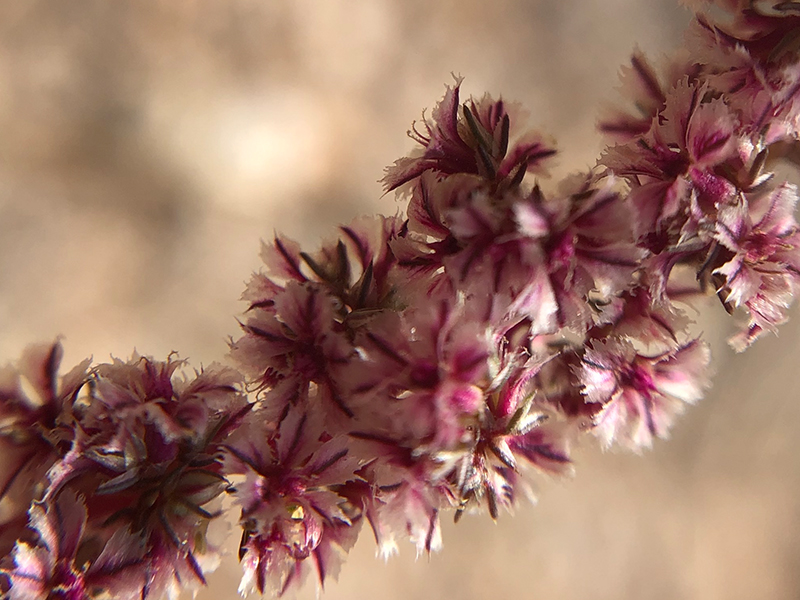Join the September EcoQuest: What’s That Weed
Find and map as many of these common “weeds” as possible.
For this EcoQuest we’re looking at common weeds you may be seeing more of lately, thanks to the abundance of rain we’ve had this monsoon season! What we consider weeds can actually be native plants we can learn more about. Observations from this month’s EcoQuest can help us learn more about these common plants and how they can be more than a weedy nuisance.
What is a weed? The most common definition is “a plant in the wrong place.” A weed is a plant that exists where they aren’t wanted. Sometimes these plants are looked at with disdain, and are the target of intense removal efforts. When you take a closer look and time to understand a weed, it can change your perspective. Many of these plants have a wide range of edible and medicinal uses which we know of from traditional indigenous knowledge. This highlights the importance of indigenous knowledge systems (IKS) and how Western science can better collaborate with indigenous peoples to learn more about the natural world. While observing these plants, see if you can spot insect or animal visitors, take notes about where they’re growing and what might be helping them grow, like an area that collects water.
You may have also noticed an abundance of caterpillars, moths and butterflies lately, feeding on some of these weeds. See if you can observe these too! White-lined sphinx moths are one of our most noticeable moths, and their caterpillars move across the desert in large groups, looking for more hostplants. They look like little armies of yellow and green caterpillars the size of a pinkie finger and have a prominent horn on the back. The caterpillars eat spiderling plants (Boerhavia spp.), a common sight along roadsides and yards after rain.
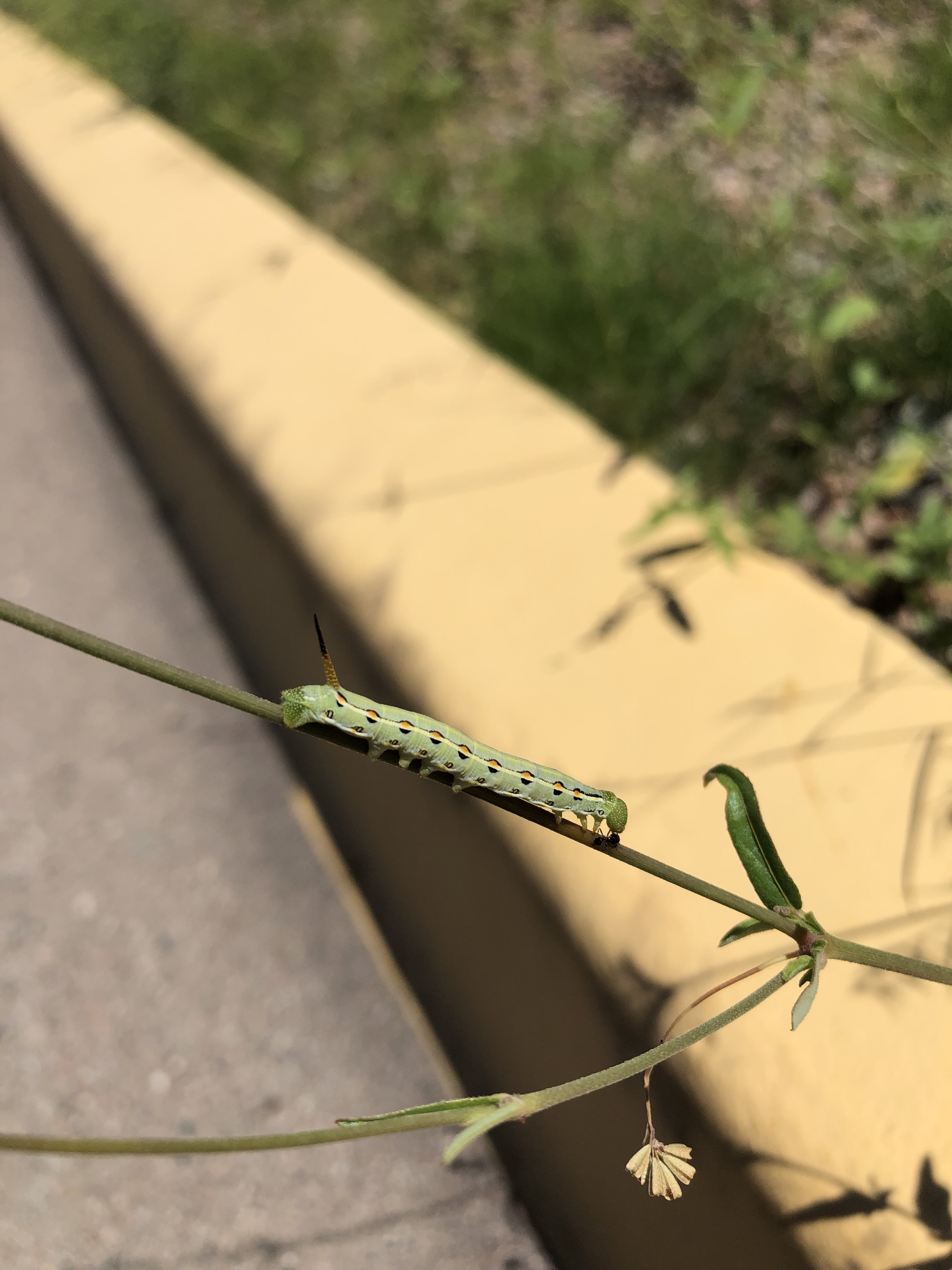
Common Name: Spiderling
Spanish Name: Mochis, hierba del cancer, hierba de la hormiga, juaninipili
Scientific Name: Boerhavia spp.
Family: Nyctaginaceae (Four O’Clocks)
Nativity/Origin: Native, Southwestern United States and parts of Mexico
Description: Spiderlings (Boerhavia spp.) are tenacious broadleaf forbs that are low growing and spread quickly. The common name comes from the long, slender stems that overlap and intertwine, giving the appearance of a spider’s web. On the ends of those long stems are many clusters of tiny pinkish white or red flowers. These plants can be found growing in natural and urban areas alike. You’ve likely passed them by on your daily commute or even right where you live! Most common species in metro Phoenix are B. coccinea, B. erecta, and B. intermedia.
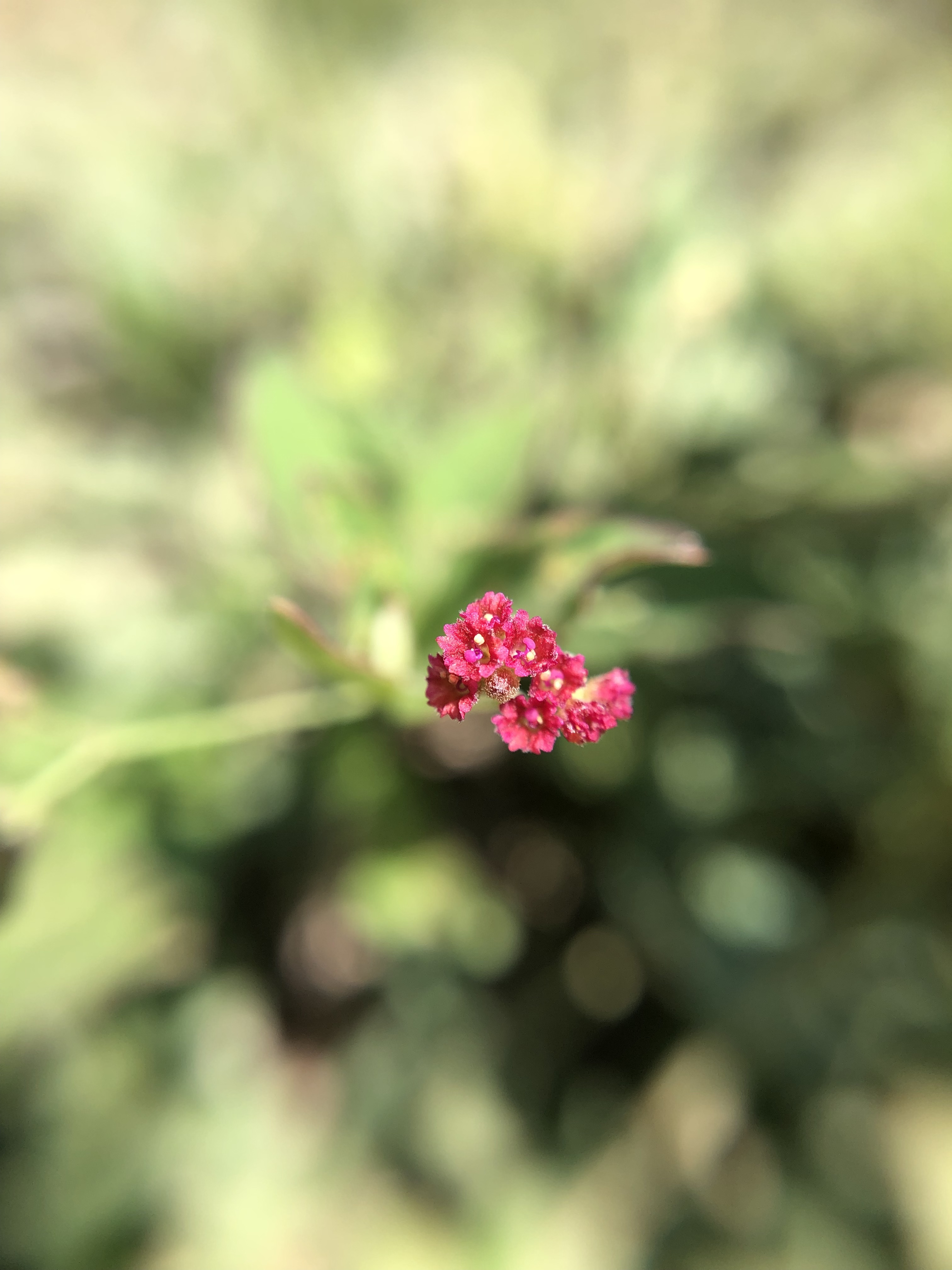

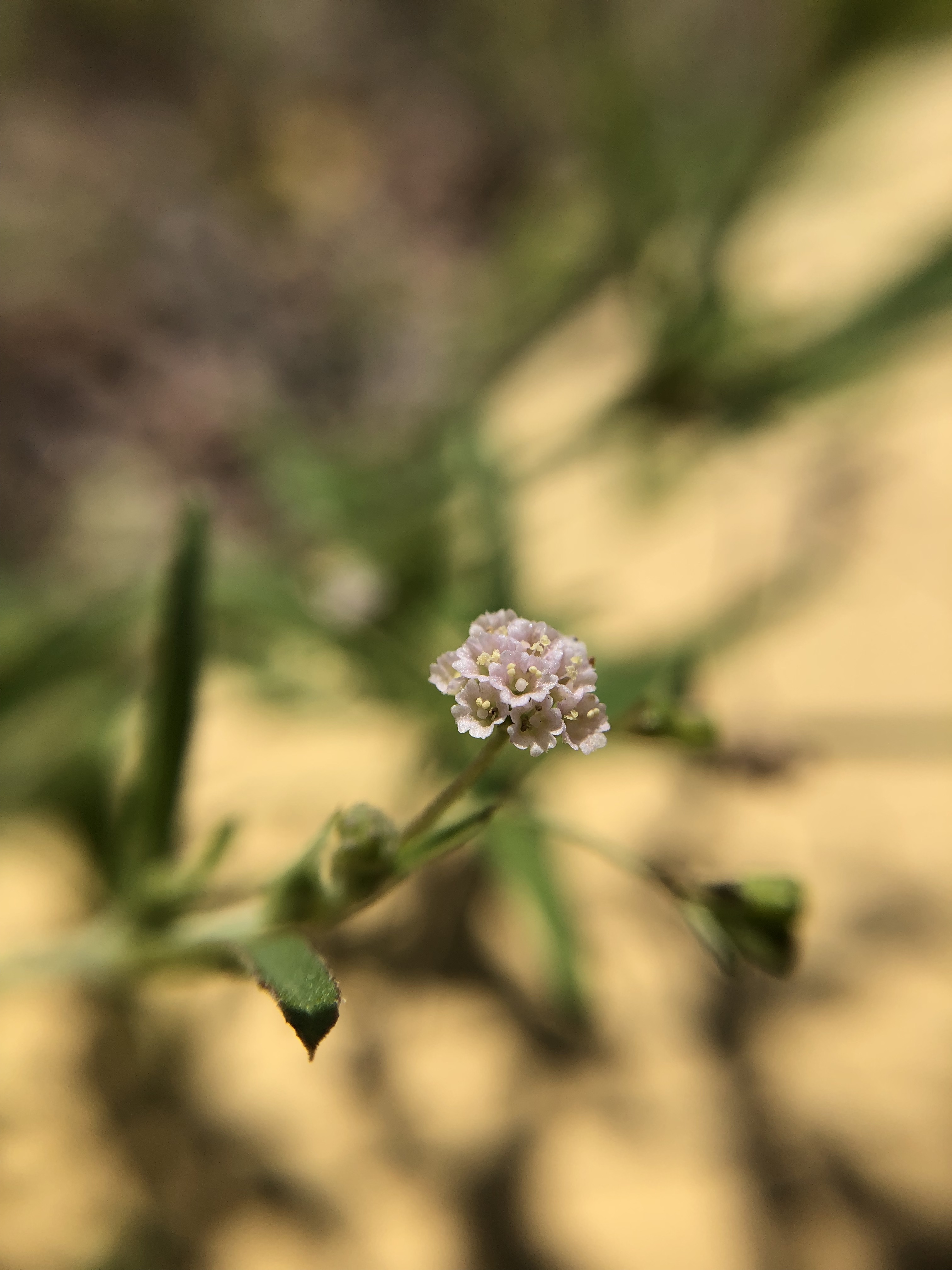
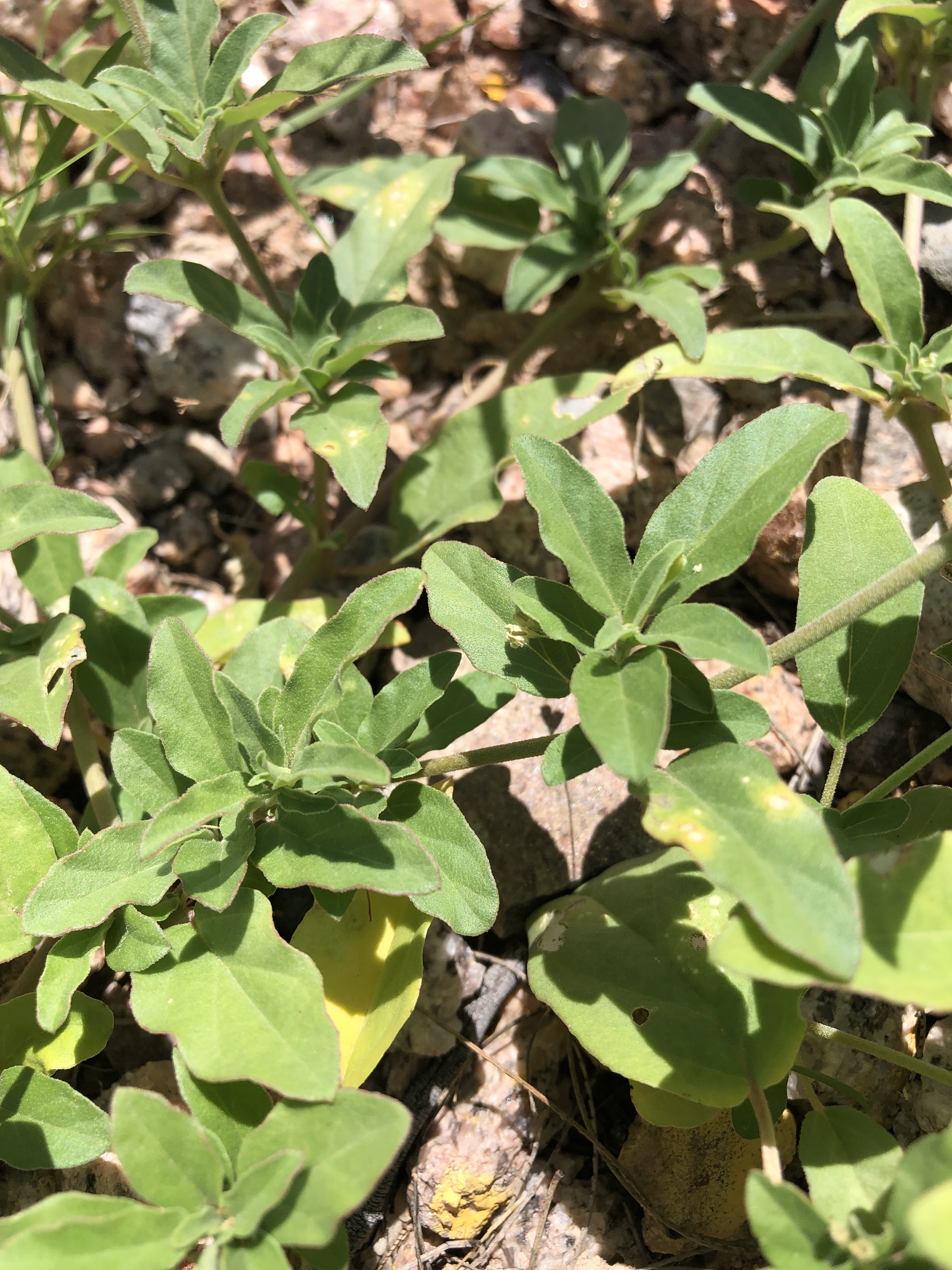
Fringed amaranth
Common Name: Amaranth, pigweed
Spanish Name: Bledo, quelite
Scientific Name: Amaranthus spp.
Family: Amaranthaceae (Amaranths)
Nativity/Origin: Native, southern part of US, Baja California and northwest Mexico.
Description: The most common species in metro Phoenix are Palmer’s amaranth (A. palmeri) and fringed amaranth (A. fimbriatus). Both are annual forbs with alternate leaves. Fringed amaranth has very narrow and linear leaves compared to Palmer’s. Palmer’s amaranth can grow up to 6 feet or more, while fringed amaranth grows to about 2 feet tall. Amaranthus spp. all have similar medicinal qualities, the seeds can be ground into flour or meal and the leaves can be eaten as greens or potherbs and are high in vitamins and minerals.
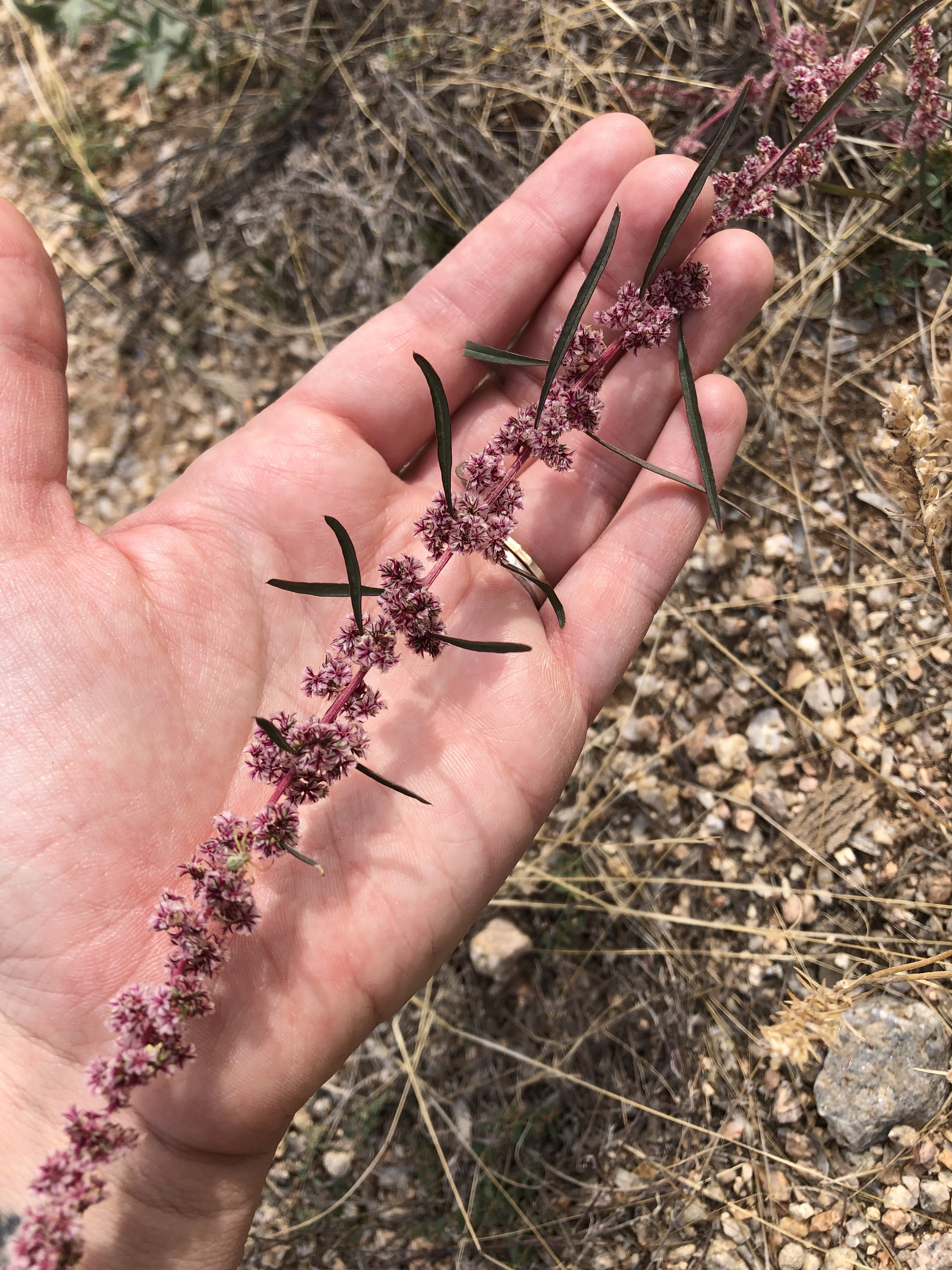
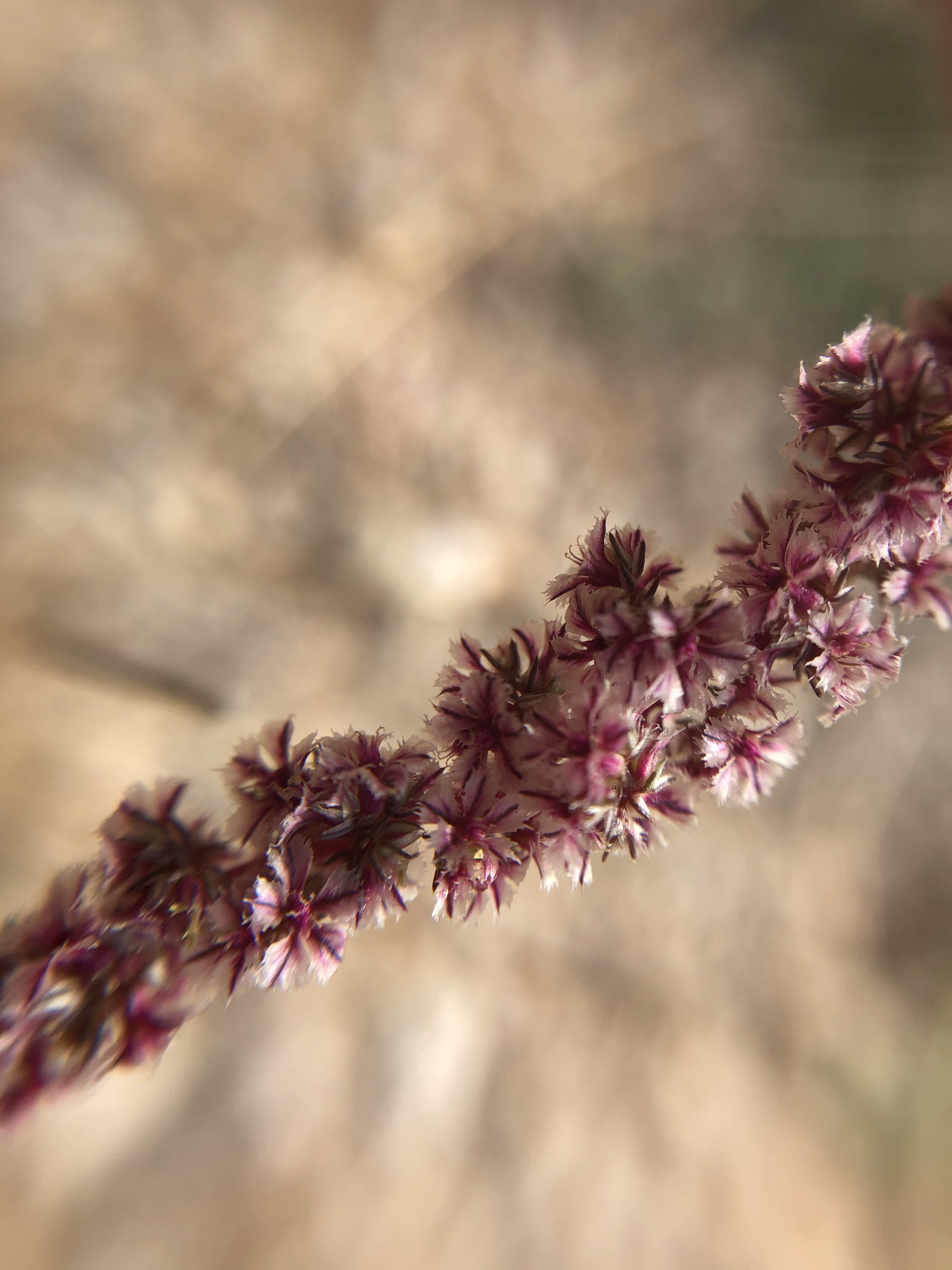
Common Name: Woolly tidestroemia
Spanish Name: Hierba lanuda, hierba ceniza, espanta vaqueras
Scientific Name: Tidestromia lanuginosa
Family: Amaranthaceae (Amaranths)
Nativity/Origin: Native, southwestern US, northern and central Mexico
Description: Prostrate, low-growing annual forb. Very noticeable thanks to its leaves and stems that covered in white woolly hairs. Stems are reddish to pinkish and flowers are small and yellow to yellowish-green. Medicinal uses include insect bite relief.
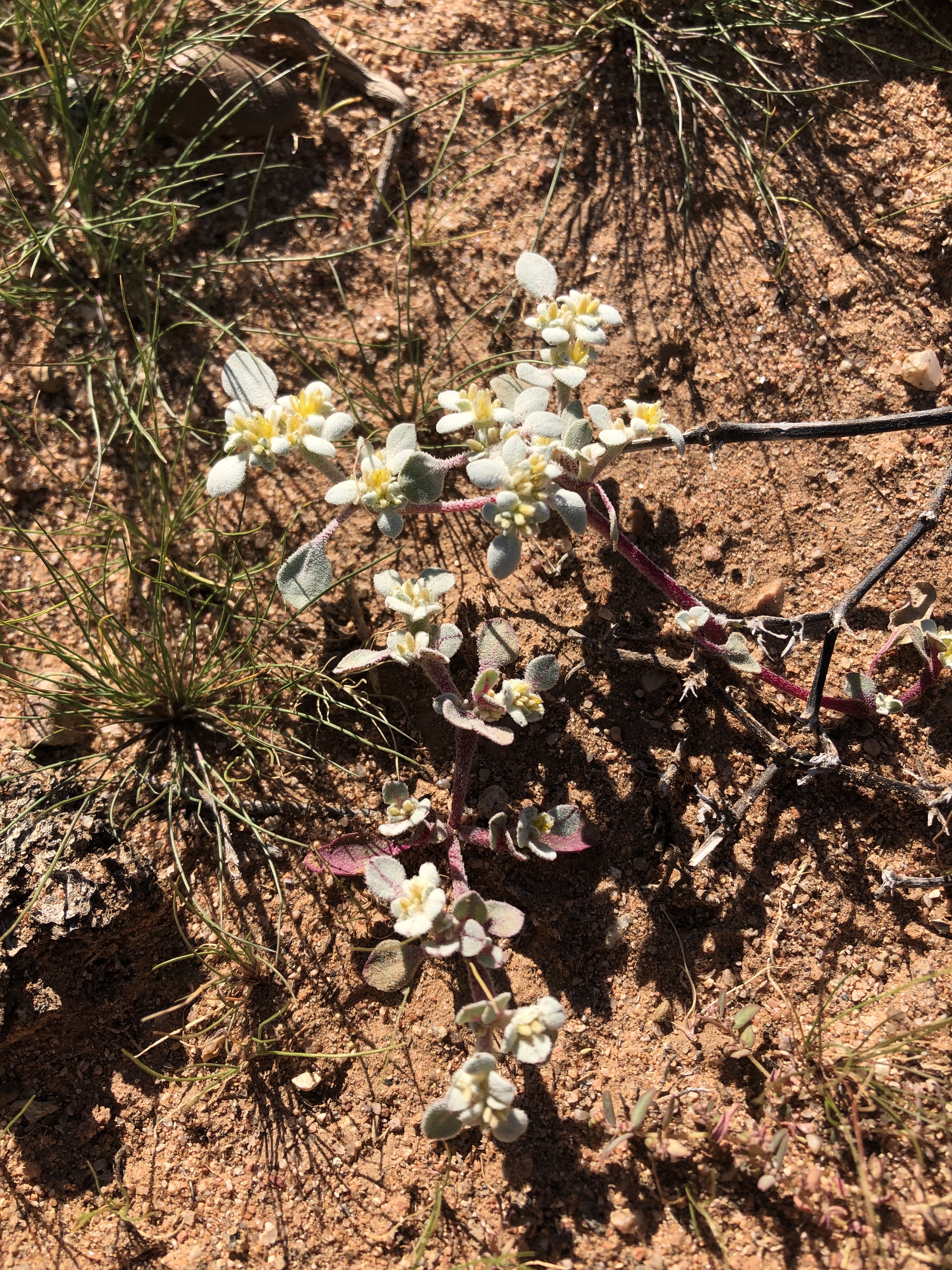
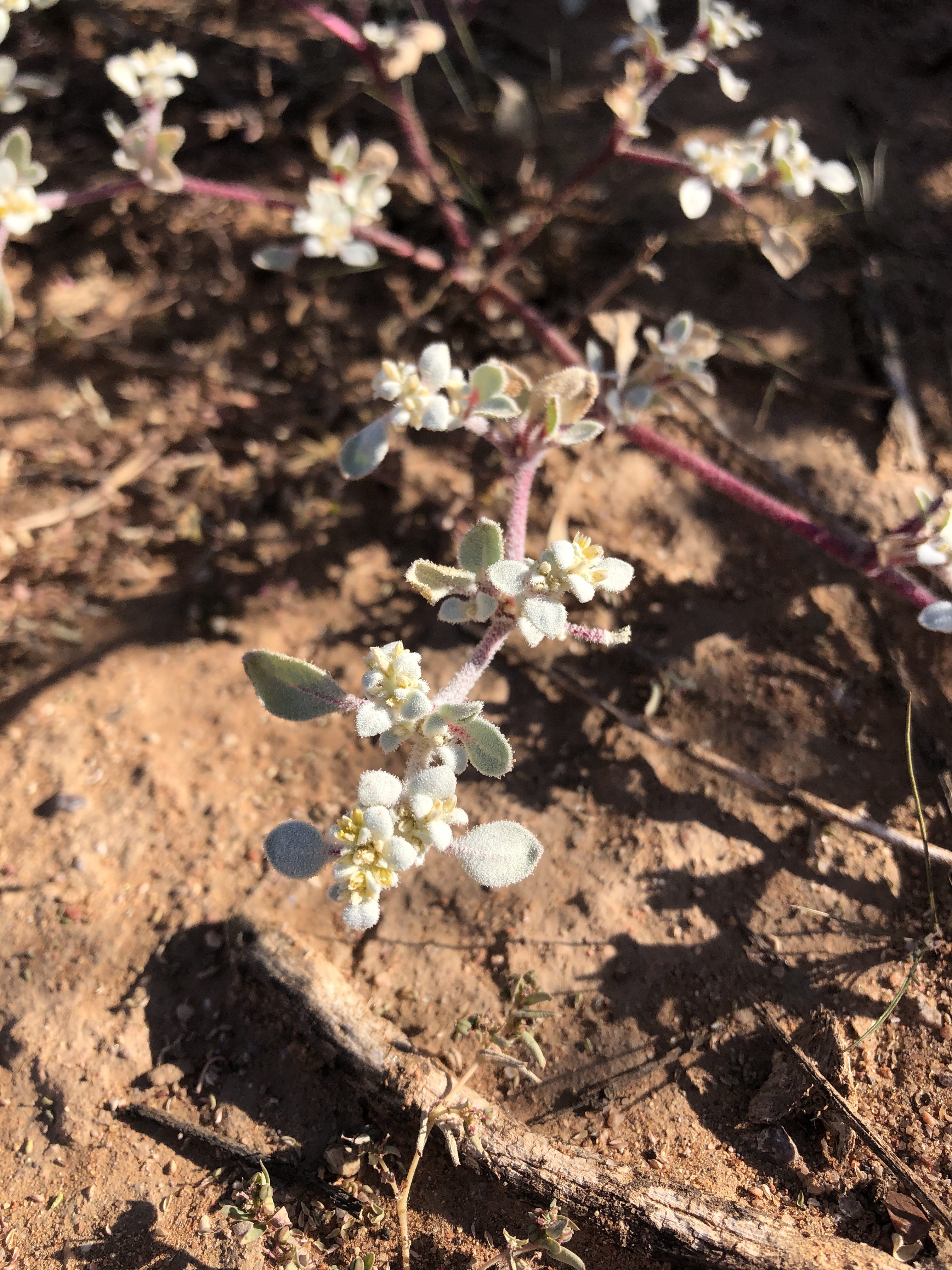
Caltrop photo on left by Marianne Skov Jensen Puncturevine on the right.
Common Name: Warty caltrop
Scientific Name: Kallstroemia parviflora
Family: Zygophyllaceae (Caltrops)
Nativity/Origin: Native
Description: A small, annual, low growing forb with opposite and pinnate leaves. Flowers are small and orangey-yellow. A common non-native look-alike is puncture vine (Tribulus terrestris). You may be familiar with this plant for getting stuck in your foot or popping bike tires! Also known as goathead, the fruits of this plant have very sharp points. This is a feature that distinguishes them from the native warty caltrop, which has non-spiny fruits with one beak. Warty caltrop’s leaflets are also wider than puncturevine. Both plants are reported to have medicinal properties including treating kidney disease, gastrointestinal problems, and skin disorders.
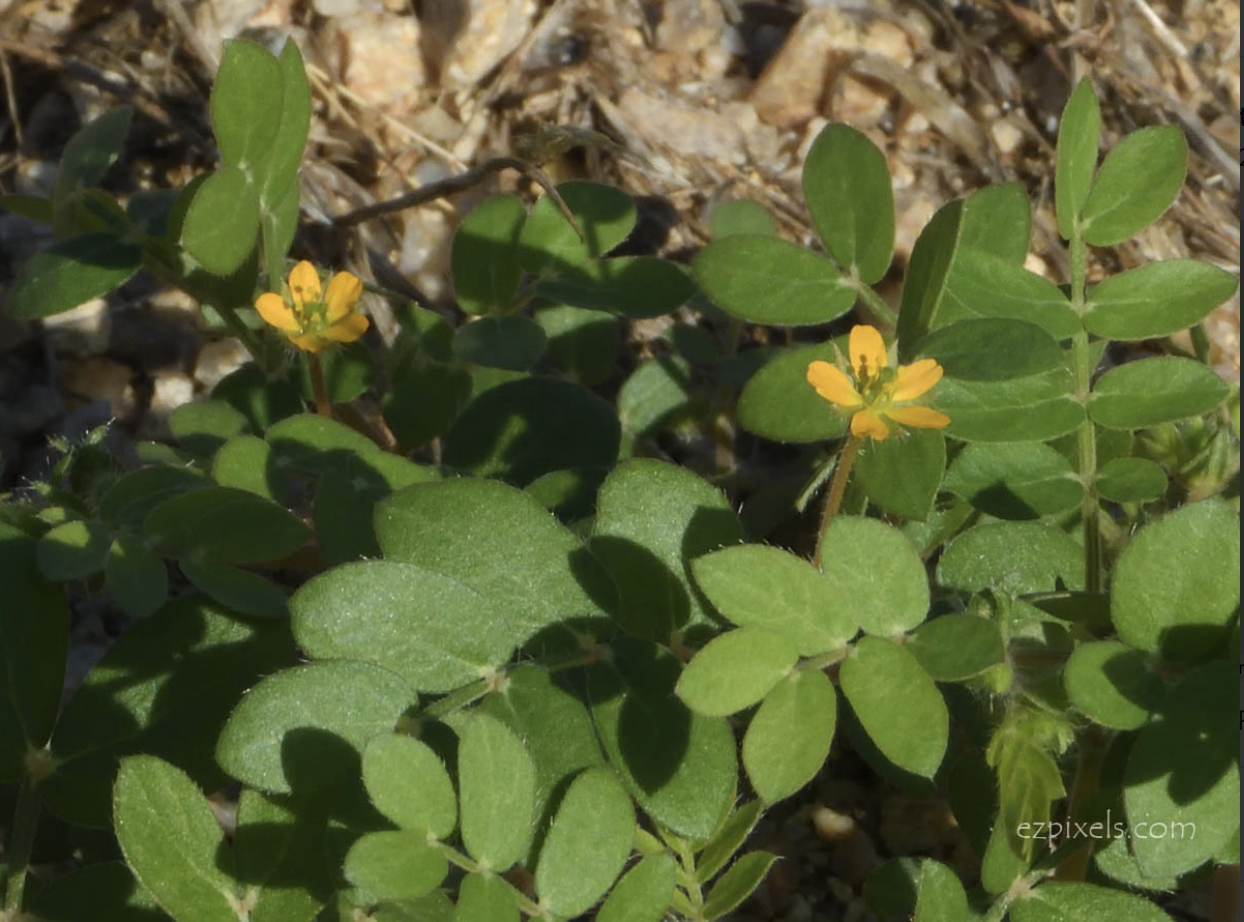
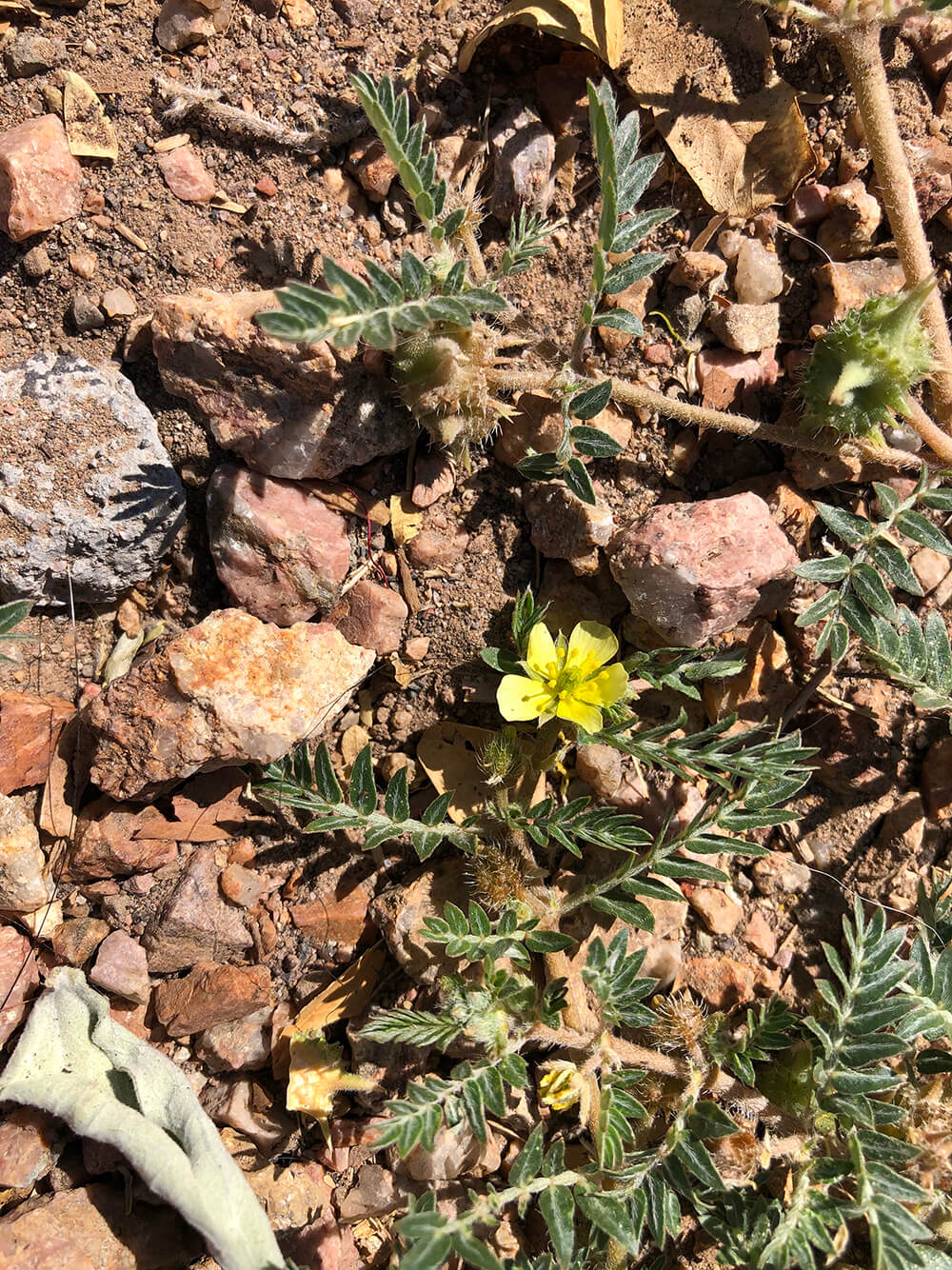
Common purslane
Common Name: Desert horse purslane and common purslane
Spanish Name: Verdolagas, verdolaga de cochi, verdolago de cochi, verdolaga blanca
Scientific Name: Trianthema portulacastrum, Portulaca oleracea
Family: Aizoaceae (Ice plants) and Portulacaceae (Purslanes)
Nativity/Origin: Native, southern US and Mexico
Description: Prostrate, semi-succulent annual herbs. Desert horse purslane has opposite egg-shaped leaves on reddish stems with pinkish purple flowers that are tucked in to where the leaf meets the stem. This plant is reported to have many medicinal uses including the treatment of fever, jaundice, and liver and kidney diseases. It is also reported to be anticarcinogenic, diuretic and antimicrobial. It is said to be edible, with some reported toxicity and throat irritation. There is debate about common purslane’s nativity, as it may have been present in the US before colonization. This species has more spoon-shaped leaves and yellow flowers. Common purslane is much more palatable with a sour or salty taste and can be eaten as a raw green, stir fried, or pickled! It is very high in omega-3 fatty acids, has a high nutrition content, is antioxidant and has medicinal uses. This species is also considered beneficial to other plants by breaking up hard soils and providing ground cover, making it easier for other plants to grow.
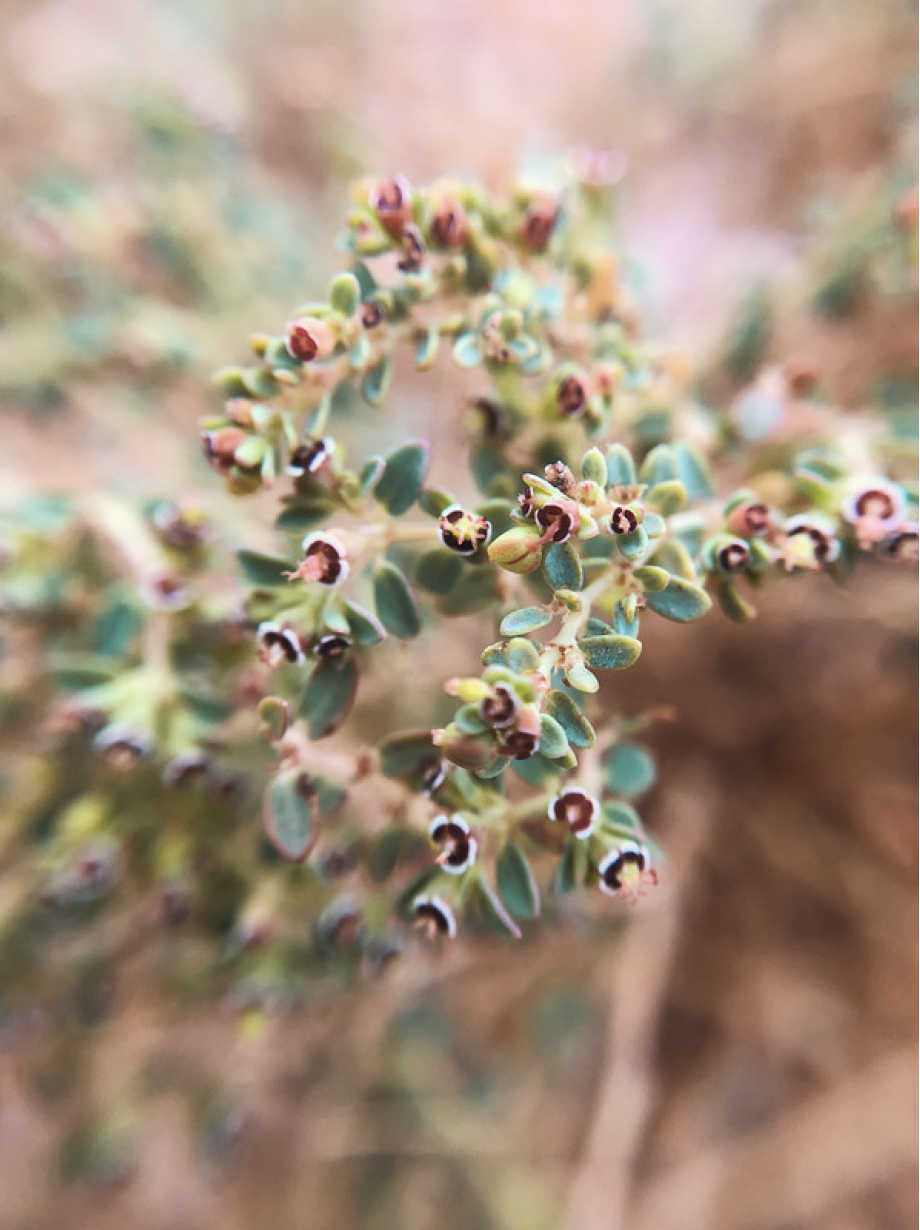
PLEASE observe COVID-19 guidelines/recommendations.
This a great opportunity to get outdoors close to home as we all navigate the complications of COVID-19. However, it is imperative that you follow the guidelines/recommendations of your local governments and institutions (wear a mask, practice physical distancing and wash your hands). Do what’s best for you and your community.
Please do not observe indoor houseplants or pets.
For your own safety and the protection of plants and wildlife, do not trespass when making observations. Please follow all posted rules and guidelines in parks/preserves and do not enter private property.
Do not remove or move natural materials (plants, animals, rocks).
Respect wildlife (do not touch, feed, or disturb animals and keep a safe distance).
